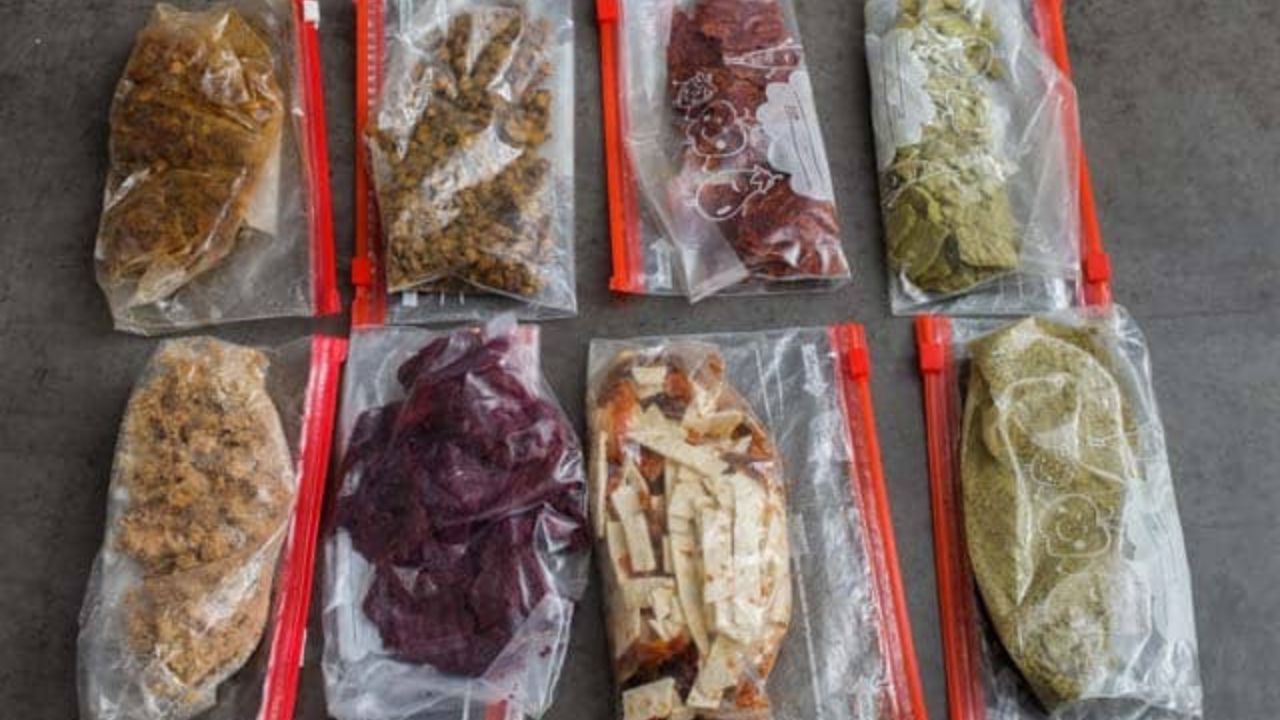When planning a backpacking trip, one of the most crucial aspects to consider is food. Freeze-dried meals have become a popular choice for backpackers due to their lightweight nature and long shelf life.
However, with so many options on the market, it can be overwhelming to choose the best freeze-dried food for your adventure. In this article, we will explore some of the top options available to help you make an informed decision on the best freeze-dried food for backpacking.
Now, let's get started.
Why Choose Freeze-Dried Food for Backpacking?
Freeze-dried food has gained popularity among backpackers for several reasons. Firstly, it's incredibly lightweight, making it an ideal choice for those looking to minimize the weight of their backpacks.
Additionally, freeze-dried meals have a long shelf life, which means you can pack them well in advance of your trip without worrying about spoilage. Moreover, the process of freeze-drying helps retain the nutritional value and flavors of the food, ensuring that you get a satisfying and nourishing meal even in the wilderness.
Benefits of Freeze-Dried Food for Backpacking
The benefits of opting for freeze-dried food for backpacking are plentiful. Not only are these meals lightweight and easy to carry, but they also require minimal preparation, making them perfect for on-the-go consumption.
Furthermore, freeze-dried food is known for its quick rehydration properties, allowing you to enjoy a hot and delicious meal within minutes, even in the most remote locations. Additionally, the compact packaging of freeze-dried meals saves valuable space in your backpack, leaving room for other essential gear.
Considerations When Choosing Freeze-Dried Food
While freeze-dried food offers numerous advantages, there are some key considerations to keep in mind when selecting the right options for your backpacking trip.
Factors such as calorie count, dietary restrictions, and flavor preferences should all be taken into account to ensure that you have a well-rounded and satisfying meal plan for your adventure.

It's also important to consider the portion sizes and nutritional content of freeze-dried meals to meet your energy requirements while on the trail.
Are you an outdoor enthusiast who loves backpacking, hiking, or camping? If so, you know that having the right outfit is essential for fueling your adventures. So Click here and get your outdoor outfit.
Top Brands and Products to Consider
When it comes to freeze-dried food for backpacking, there are several reputable brands and products that have garnered praise from outdoor enthusiasts.
- Mountain House: Renowned for its extensive selection of freeze-dried meals, Mountain House offers everything from classic breakfast options to hearty dinner entrees.
- Backpacker's Pantry: With a focus on organic and non-GMO ingredients, Backpacker's Pantry provides flavorful and nutritious meals for outdoor enthusiasts.
- Wise Company: Known for its emergency preparedness kits, Wise Company also offers a range of freeze-dried meals tailored for backpacking adventures.
- Omeals: Innovating the traditional freeze-dried meal concept, Omeals provides self-heating meals that require no additional equipment, ideal for on-the-go consumption.
These brands are known for their high-quality ingredients, delicious flavors, and reliable packaging, making them top choices for backpackers seeking convenient and nutritious meal solutions.
Tips for Packing and Storing Freeze-Dried Food
Packing and storing freeze-dried food effectively is essential for ensuring that your meals remain intact and ready for consumption throughout your backpacking trip. It's advisable to use durable, resealable bags or containers to organize and protect your freeze-dried meals, keeping them safe from moisture and potential damage.
Additionally, following the instructions for rehydration and preparation provided on the packaging will help you make the most of your freeze-dried meals, ensuring a satisfying culinary experience in the great outdoors.
Here Are Some Other Tips
- Use Resealable Bags: Transfer freeze-dried meals from their original packaging to resealable bags to save space and reduce waste.
- Label and Date: Clearly label each bag with the meal name and expiration date to facilitate organization and ensure freshness.
- Store Properly: Keep freeze-dried food in a cool, dry place away from direct sunlight to maintain its quality and shelf life.
- Bring Extra Water: Since rehydrating freeze-dried meals requires hot water, ensure you have an adequate supply or a reliable water filtration system.
Healthiest Freeze-Dried Meals
When selecting freeze-dried meals for backpacking, prioritizing nutrition is key. Look for options that are high in protein, fiber, and essential nutrients to keep you energized during your outdoor activities.
Additionally, consider the ingredient list to ensure that the meals are free from artificial additives and preservatives. Some of the healthiest freeze-dried meals on the market include options that feature organic ingredients, whole grains, and a balance of macronutrients.
Whether you prefer savory dishes like quinoa bowls or sweet treats like fruit and yogurt, there are plenty of nutritious freeze-dried meal options to choose from.
Best Hiking Freeze-Dried Food
When you're hitting the trails for a day hike or embarking on a multi-day backpacking trip, having the best hiking freeze-dried food can make all the difference, look for options that are lightweight, compact, and easy to prepare.
From hearty stews and pasta dishes to breakfast skillets and snack bars, there's a wide range of freeze-dried food specifically designed for hiking adventures.
Consider the portion sizes and caloric content of the meals to ensure that they align with your energy needs during outdoor activities. Additionally, opt for packaging that is resealable and easy to pack out, minimizing waste and environmental impact.
Freeze-Dried Meals
Freeze-dried meals come in a variety of flavors and cuisines, catering to different dietary preferences and restrictions. Whether you follow a vegetarian, vegan, gluten-free, or paleo diet, there are freeze-dried meal options available to accommodate your needs.
Additionally, many brands offer single-serving pouches as well as larger meal kits, providing flexibility for solo adventurers and group outings alike.
Best Freeze-Dried Camping Food
Camping presents unique challenges, as you may have limited access to cooking equipment and refrigeration. Opt for freeze-dried meals that require only hot water to rehydrate, eliminating the need for extensive cooking equipment.
Additionally, consider the weather conditions when choosing meals—heartier options may be more suitable for cold-weather camping, while lighter fare is ideal for warm-weather trips.
Final Thoughts
In the category of backpacking cuisine, freeze-dried food emerges as a versatile and practical choice for adventurers seeking lightweight, nutritious meals on the trail.
By considering factors such as nutritional content, taste, packaging, and brand reputation, backpackers can select freeze-dried meals that fuel their adventures while satisfying their taste buds.
With proper packing and storage techniques, these meals can accompany backpackers on epic journeys, providing nutrition and satisfaction amidst breathtaking landscapes.
Frequently Asked Questions
1. Can You Freeze Dry Grapes?
Yes, you can freeze dry grapes to create a delicious and nutritious snack with a crispy texture.
2. Can You Freeze Dry Cream Cheese?
While it's technically possible to freeze dry cream cheese, the texture and taste may be altered, so it's not commonly done.
3. What Can You Not Freeze Dry?
Foods with high oil or fat content, such as avocados and nuts, do not freeze dry well. Additionally, foods with high water content, like cucumbers and watermelon, may not yield desirable results.
4. Can You Freeze Dry Anything?
Most foods can be freeze-dried, including fruits, vegetables, meats, and dairy products. However, some items may not retain their original qualities after the process.









Leave a comment